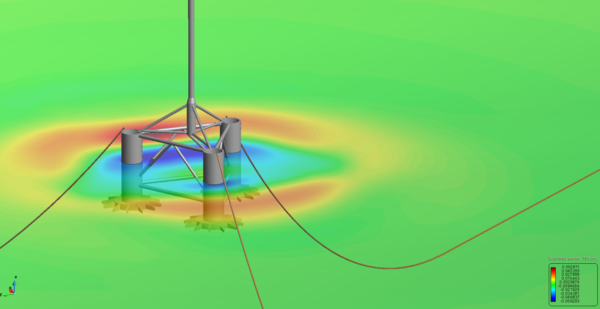Summary
SeaFEM is a suite of tools for the computational analysis of the effect of waves, wind and currents on naval and offshore structures, as well as for maneuvering studies.
Description
SeaFEM offers a state of the art solver developed for the most realistic seakeeping simulations of 3D multi-body radiation and diffraction problems, by solving potential flow equations in the time domain, using the finite element method on unstructured meshes. SeaFEM features the latest technology for solving first and second order diffraction-radiation equations with real sea spectra.
The integration of SeaFEM in available CESGA HPC infrastructures allows to analyze cases that until now were unfeasible to calculate by studying non-linear effects in the seakeeping assessment which cannot be properly predicted with the frequency domain solvers. The experiment solution allows the extension of advanced seakeeping tools in marine design industry by increasing the range of problems that can be solved compared to frequency-domain solvers and by reducing significantly the computing time.
The user can only focus on preparing the model locally while all communications with the CESGA HPC infrastructure is handled by a management interface. This interface is in charge of establishing the communication and data transfer between the CESGA HPC infrastructure and the end-user’s local computer, ensuring the highest level of security using SSH. It is also responsible for collecting results and monitoring all the process in order to maintain the end-user always informed about the state of the analysis.
CESGA is the centre of computing, high performance communications systems, and advanced services of the Galician Scientific Community, the University academic system, and the National Scientific Research Council (CSIC).
For further information about the SeaFEM solution integrated with CESGA HPC infrastructure, please contact us by email at info@compassis.com.
Document information
Published on 05/02/19
Submitted on 04/02/19
Licence: CC BY-NC-SA license
